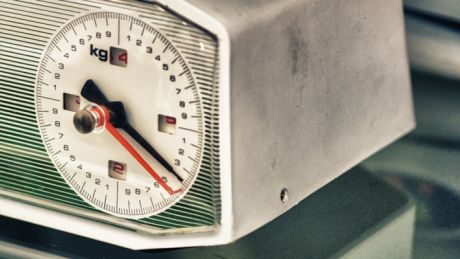Does The Atkins Diet work?
Is The Atkins Diet a good way to lose weight and keep it off?

A diet that doesn’t count calories and doesn’t limit steak, cheese or bacon intake sounds perfect to most tastebud-owning humans. So perfect that at its height in the early 2000s, one in every 11 Americans was on it, including A-list celebrities of the time such as Catherine Zeta-Jones and Jennifer Aniston. And if you visit the official website you can read countless stories of people claiming to have lost over 110kg.
We know what you’re thinking: what’s the catch then? No carbs.
Well, not exactly, but The Atkins Diet is partly responsible for the idea that carbs are to be avoided if you want to lose weight. This can be true, but the Atkins approach is strangely specific. During the induction phase – yes, the diet is structured into phases – you’re only allowed around 20g of carbs each day (or about one slice of white bread), and these should all come from greens. As you progress through phases this carb embargo gets less strict, but you can kiss goodbye to pasta, bread, cakes or anything like that for a while.
Does it work?
The Atkins Diet can make you lose weight. According to a Stanford University study comparing four popular diets, Atkins came out on top for weight loss, while research at Temple University shows that the plan has secondary health benefits such as lowering cholesterol. But like most strictly prescriptive diets the problem isn’t so much its effectiveness, as much as how hard it is to stick to its rigid rules.
As well as the previously mentioned carb-heavy foods, rice, pasta and cereal are also forbidden – most fruit is relatively frowned upon too. You’ll have to fastidiously use kitchen scales and know the macros (the fat, carbs, protein breakdown of food) of everything you eat. That’s a ball-ache in and of itself, but what if you’re going out for a meal with friends or on a date? Or your office is heading for drinks? Too bad, you’re going to have to stay at home with your grilled chicken and broccoli, or be that guy with the Tupperware and special dietary requirements. Unless you’ve got the stoic resolve of a Tibetan monk, before long it’s more than likely you’ll be joining the 95% of dieters who abandon ship.
The four phases of the Atkins diet
Induction: The hardest phase, the aim of this is to enter a state of ketosis (see our article on the ketogenic diet for more details on this) where a lack of carbohydrates forces your body to consume fat for energy. This is achieved by cutting carbs to just 20g per day, and only getting these from greens. The idea being that due to the lack of energy (glycogen) from carbs your body will instead turn to your fat stores. As well as cutting down carb intake you should also aim to eat around 100g of fat and 150g of protein per day.
Ongoing weight loss: After two weeks of induction you enter the next phase and start climbing the ‘carb ladder’. This means you can slowly start adding other food sources such as nuts, blueberries and yoghurt as you try to find what Atkins diet terminology coins as ‘your personal carb balance’. Worked out using a black magic-esque combination of your age, gender, level of physical activity, hormonal issues, medications and how much weight you’ve been losing in relation to your carb intake (sorry, we know this is confusing, but we didn’t come up with it. Check out The Atkins Diet website if you want clarification of the physiological reasoning behind this phase). This continues until you’re within 4.5kg of your target weight.
Get the Coach Newsletter
Sign up for workout ideas, training advice, reviews of the latest gear and more.
Pre-Maintenance: This stage requires patience as you gradually increase your carb intake by 10g a week until you find the amount you can have while still maintaining your ideal weight. You can now add oats and starchy vegetables such as potatoes and yams. The objective here is to finally reach your target weight, stop upping your carb intake and then maintain that weight for a month.
Lifetime Maintenance: Though not necessarily a stage, the idea is that you maintain that target weight and if you start losing or gaining, you go back to adjusting your carbs by 10g a week until you’re back to equilibrium.
Finally, you’re released back into society as a thinner, but infinitely more anal human being.
If you can stick to it, The Atkins Diet works and if you have that kind of willpower and discipline more power to you. But for most of us it’ll be a struggle to stick with it and difficult to deal with the impact on energy and mood, especially for the first two ‘phases’. Making smaller adjustments to your diet such as cutting out sugary drinks and processed foods, reducing the amount of refined carbs you eat and skipping pudding more often might not have immediately dramatic effects, but in the longer run you’ll see a difference and should also start feeling more satisfied both physically and mentally. So whether you’re trying to shed your love handles, impress that special someone, or want to get more ripped for summer it’s the small changes that will get you there, and keep you there.
